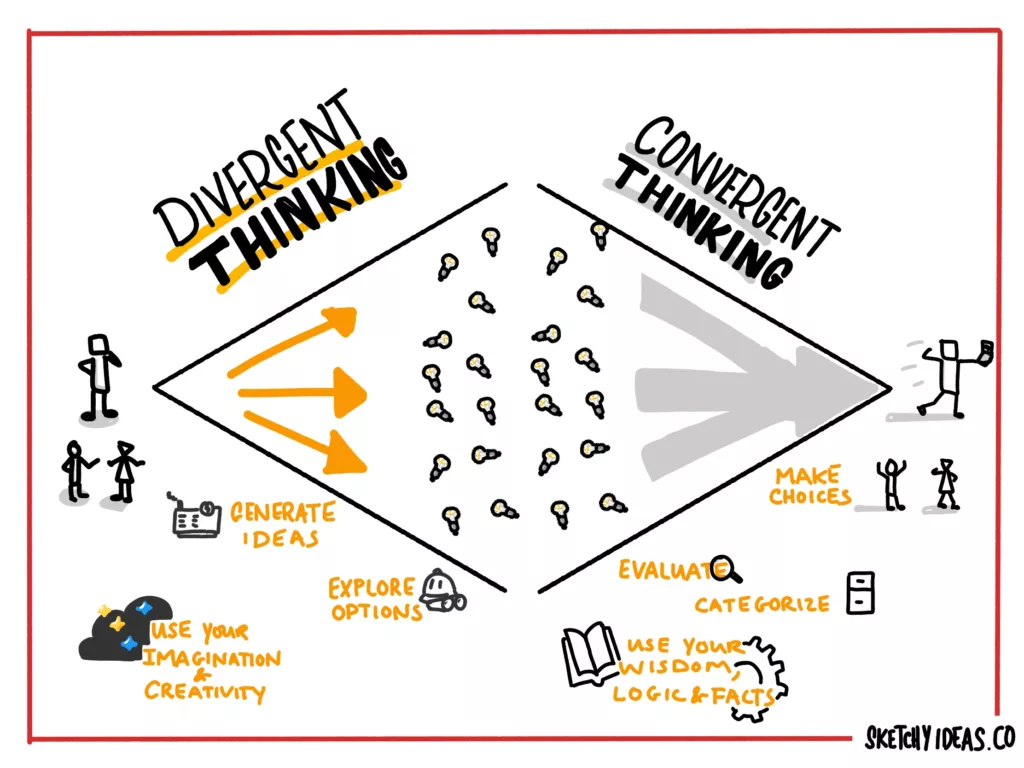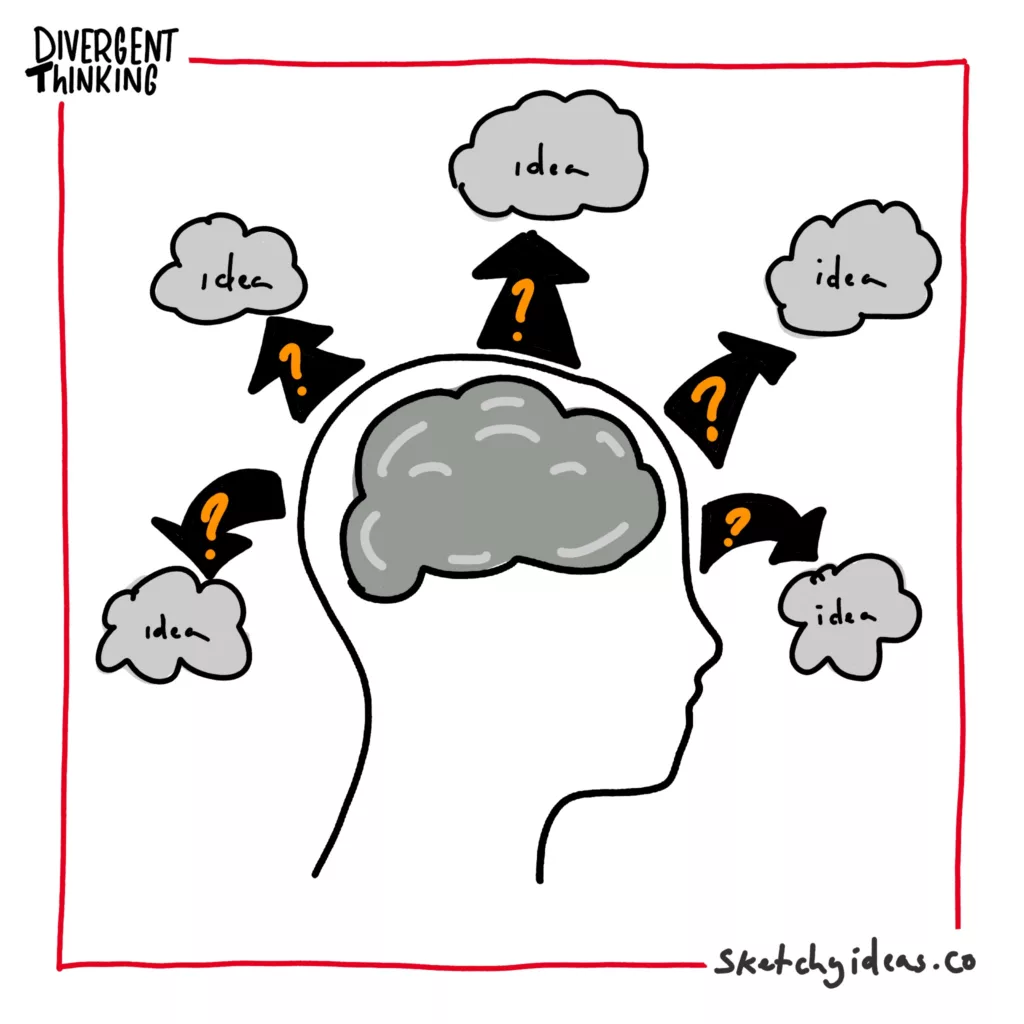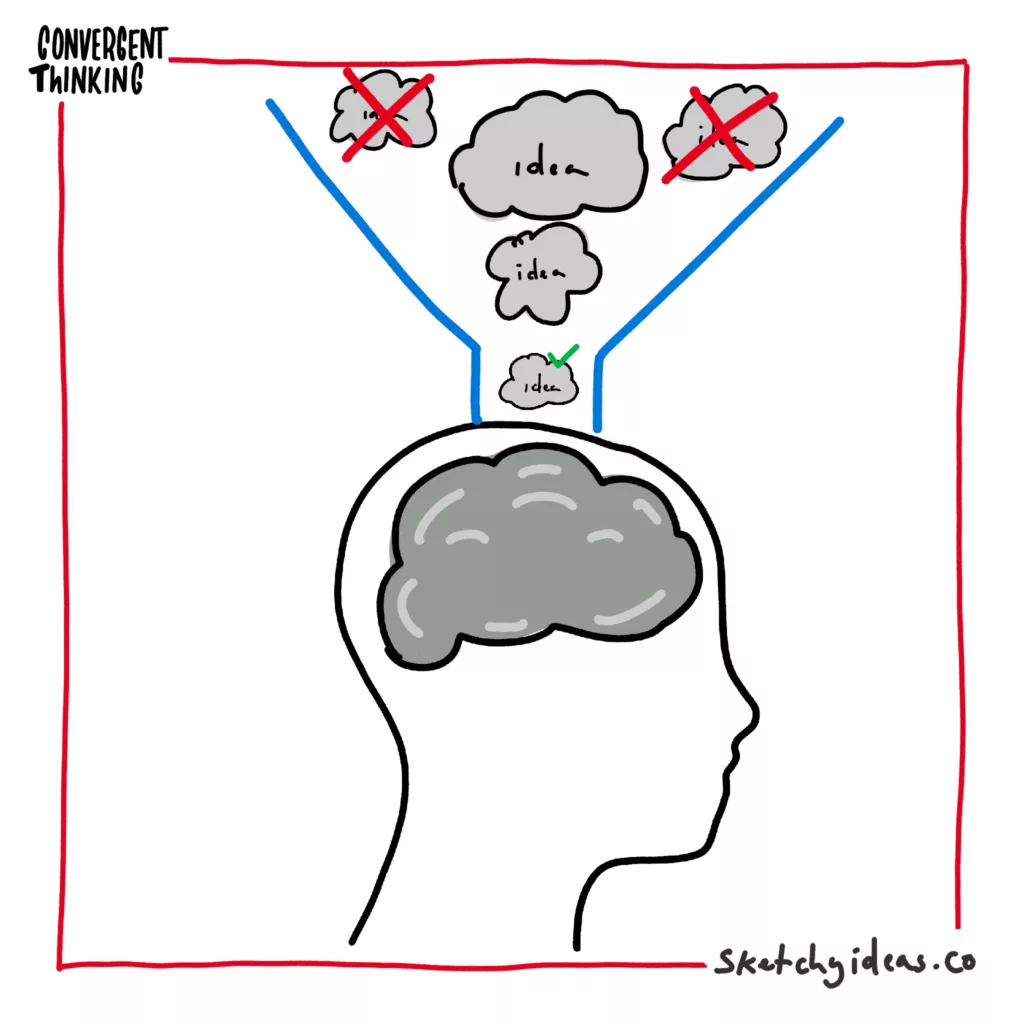We all use divergent and convergent thinking often without realising it.
But understanding and consciously employing these two thinking tools can help us better solutions than our usual haphazard approach.
In the sub 5 minutes it takes to read this article, you’ll find out what they are, why they are useful, and how to employ them effectively.

What is Divergent Thinking?
Divergent thinking is about coming up with more ideas.

The more, the better. It’s a classic step in “brainstorming” using principles like “Yes, and…” so that we can move out from a starting question or problem to find more options.
When done well, divergent thinking leads to more creative ideas and out-of-the-box thinking than normal.
What is Convergent thinking?
Convergent thinking is about finding the single best solution to a problem or answer to a question.

This uses logic and reasoning to establish criteria, eliminate options, and identify the best solution. Sometimes new ideas will emerge, but these are typically refined versions of new options.
A time to diverge and converge
If you want more creative solutions, you need more time to diverge.
Typically, we prevent ourselves and our colleagues from coming up with more divergent ideas by evaluating them too quickly. When we jump from diverging to converging, we block our more creative ideas. And while an idea might not be good, it can help inspire a better idea.
By setting time to diverge and then time to converge, we are able to both come up with more unique ideas, and be more confident of our conclusions.
The use of time limits and set phases helps us know we have explored options, evaluated them and avoid procrastinating over picking the course of action to follow. We may not have the best solution at the end of our convergent thinking sessions, but picking an option will provide more data we can use in our divergent and convergent thinking in the future.
Momentum often brings clarity.
How to apply divergent and convergent thinking in practice
Let’s imagine you want to come up with a new topic to write about.
Most of us would spend some time thinking of some ideas and if one really takes us, we might start writing it.
Here’s how using two set thinking periods might work.
- Set 10 minutes on a timer and start writing down as many ideas for topics you can write about as possible.
- Use the ideas you come up as sparks for other ideas.
- Look to steal ideas from other writers of different topics
- If you run out of ideas, don’t stop. Keep going till the time runs out. You’ll often find you get more ideas after a moment of feeling like you’ve covered everything.
- Set a new 10-minute timer and start evaluating each idea.
- Use a scoring system of 1-3 with 1 for good ideas, 2 for okay ideas and 3 for bad ideas
- If you have criteria for what makes a good topic, use it now. If not, think about what would make for a good article.
- After the timer stops, pick one topic to start work on.
- You don’t have to pick the best topic, but just one good topic you want to write about.
- You can always change later if you find it too difficult
- Use your list of good ideas as inspiration for your next phases of ideation.
Start using divergent and convergent thinking in your daily life
This framework isn’t just for work or creative projects.
Using intentional periods of divergent and convergent thinking can help you find better solutions and be more confident of your conclusions. It’s especially useful when working with groups, or when you feel unsure over what to do.
Give it a try next time you have a problem or question to answer.

Leave a Reply